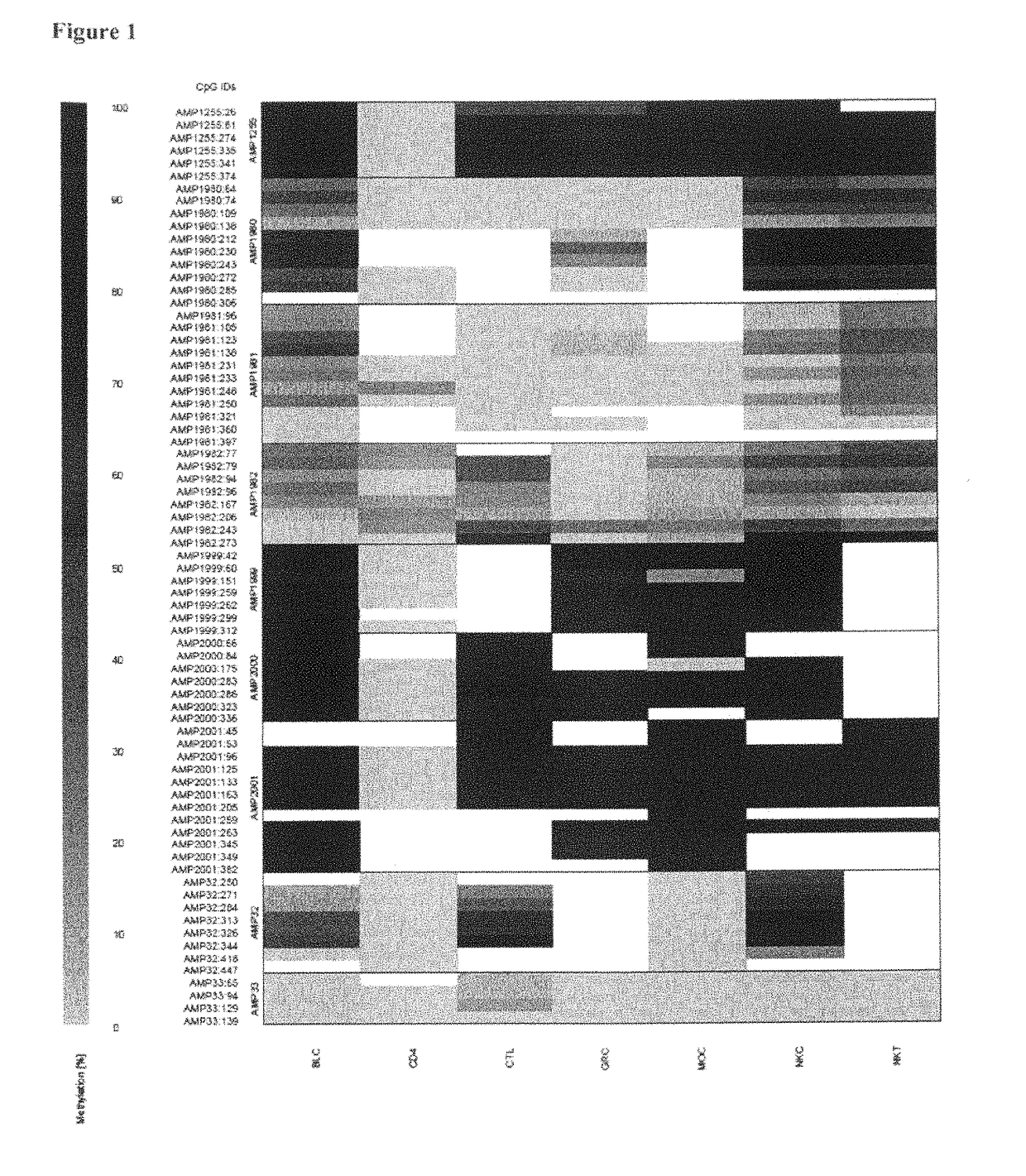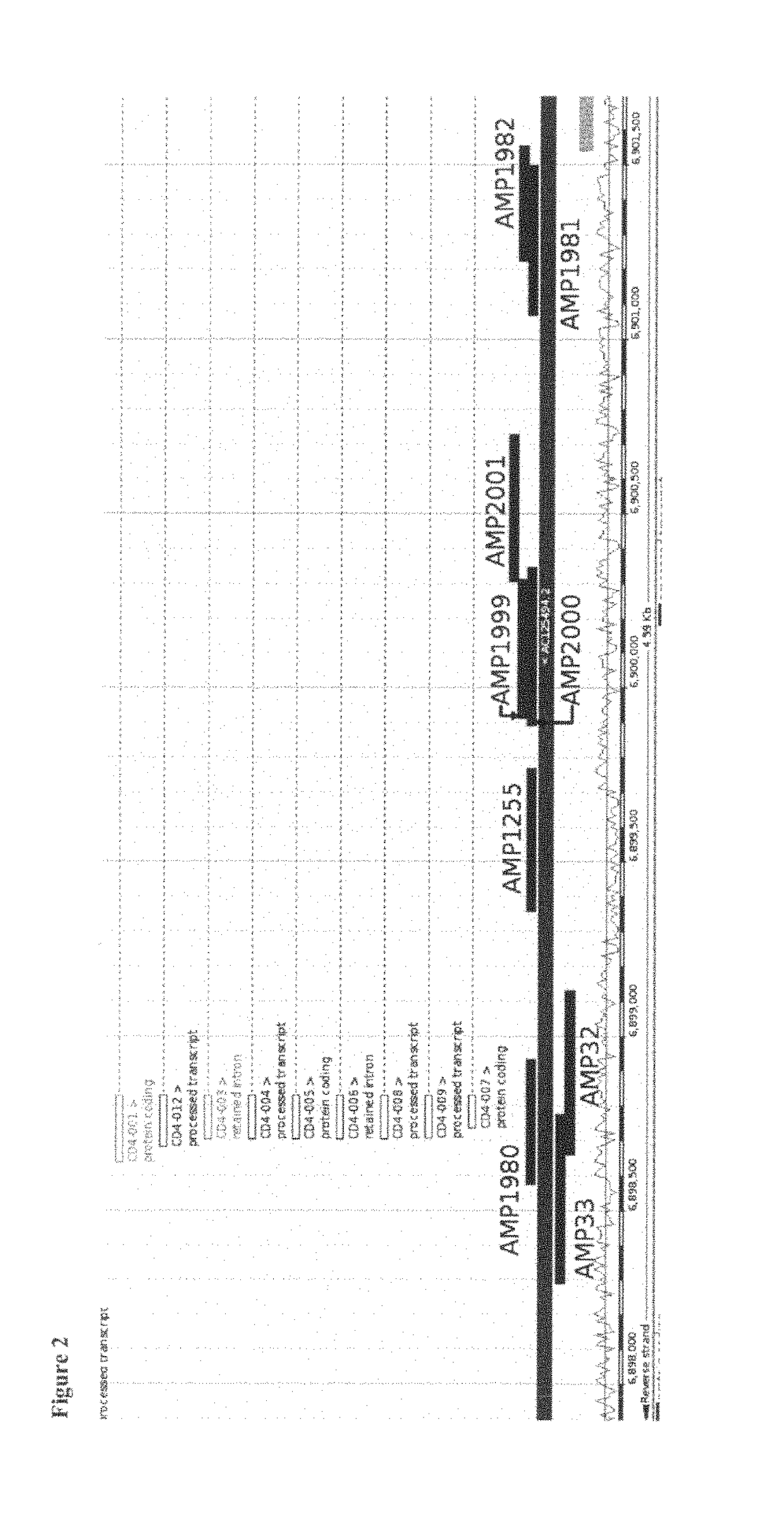Epigenetic marker for the identification of CD3CD4 positive T lymphocytes
a t lymphocyte and epigenetic marker technology, applied in the field of epigenetic marker for the identification of cd3cd4 positive t lymphocytes, can solve the problems of not being able to distinguish between these two, and being difficult to specifically detect, identify, discrimina
- Summary
- Abstract
- Description
- Claims
- Application Information
AI Technical Summary
Problems solved by technology
Method used
Image
Examples
example 1
CD4-Analysis
[0060]The inventors have purified various blood subsets, including CD3+ / CD4+, CD3+ / CD8+ nave and memory T lymphocytes, CD56+ natural killer cells, CD19+ nave and memory B cells, CD14+ monocytes and CD15+ granulocytes. DNA from the purified cells was bisulfite-treated and analyzed at various CpG dinucleotide motifs. The inventors then compared the non-bisulfite convertibility (finding C as for Cytosine that was methylated in the original sequence versus T for cytosine that was non-methylated in the original sequence and therefore bisulfite converted).
[0061]The data showed various CpG positions in a region of CD4 that were non-methylated in all CD3CD4 T-cells while methylated in all other blood cell types. The differentially cytosine-modified gene region as found for CD4 is shown in SEQ ID No. 1.
[0062]As examples for this region, several amplicons were found to show clear non-methylation (namely No. 1255, No. 1999, No. 2000 and No. 2001, see FIG. 1), whereas regions outsid...
example 2
Monitoring of CD4 Levels in Cancer Patients Undergoing Therapy.
[0066]The inventors quantified the amount of CD3+ and CD4+ T cells as well as level of CD4+ T cells as portion of CD3+ T cell fraction by assessment of bisulfate convertibility of DNA in amplicon No. 2000 according to SEQ ID No. 4 (Table 1). Peripheral blood samples at two different time points during therapy follow up were used.
[0067]The results show patient specific changes of CD4+ T cell level and a reduced portion of CD4+ cells in relation to CD3+ T cell level during follow-up of cancer therapy which is related to drug efficacy, can indicate outcome prognosis, and / or can also predict therapy efficacy and safety.
[0068]
TABLE 1Assessment of CD4+ and CD3+ T cell levels of two patients (P1, P2) under a certain therapy.Two time points were assessed (1 and 2). Calculation of CD4+ and CD3+ cell levels followingquantification of bisulfite convertible CpG containing regions via qPCR. (CP value) value tomeasure; (Standard Units...
PUM
| Property | Measurement | Unit |
|---|---|---|
| nucleic acid based assay | aaaaa | aaaaa |
| current state | aaaaa | aaaaa |
| time | aaaaa | aaaaa |
Abstract
Description
Claims
Application Information
 Login to View More
Login to View More - R&D
- Intellectual Property
- Life Sciences
- Materials
- Tech Scout
- Unparalleled Data Quality
- Higher Quality Content
- 60% Fewer Hallucinations
Browse by: Latest US Patents, China's latest patents, Technical Efficacy Thesaurus, Application Domain, Technology Topic, Popular Technical Reports.
© 2025 PatSnap. All rights reserved.Legal|Privacy policy|Modern Slavery Act Transparency Statement|Sitemap|About US| Contact US: help@patsnap.com


